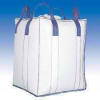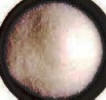| Anmol Chemicals is the pioneer manufacturers of Potassium Gluconate, Pharmaceutical Excipients Food & Flavor chemicals in India. We offer Halal and Kosher Potassium Gluconate made in an ISO9001, ISO22000 (FSSC22000) cGMP and GLP certified facility. Our group has several manufacturing facilities spread across the world, supported by toll manufacturers and representatives in UAE, Europe, USA, China and has several associated manufacturing facilities spread across India. All the Information on Physics, Chemistry, Applications, Uses and Technology on Manufacture of Potassium Gluconate is in these pages. |
| The units have one or more of the certifications like FDA GMP, ISO 9001, ISO 22000, HACCP, REACH, Kosher & Halal |
Potassium Gluconate SDS GHS, MSDS Sheet
Specifications of Potassium Gluconate Manufacturers Suppliers Exporters
Potassium Gluconate SDS GHS MSDS Sheet, Material Safety Data Sheet
Section 1: Chemical Product Identification
Product Name: Potassium Gluconate
CAS#: 299-27-4
EINECS EC Number: 206-074-2
Synonym: D-Gluconic acid monopotassium salt, Monopotassium Gluconate; Potassium D-gluconate
Chemical Name: D-gluconic acid, monopotassium salt
Chemical Formula: C6H11KO7 on anhydrous basis
Molecular Weight: 234.25 on anhydrous basis
Recommended usage: Industrial Manufacturing.
Section 2: Hazards Identification
GHS, Globally Harmonized System Classification in accordance with 29 CFR 1910
Classification according to Regulation (EC) No 1272/2008
Not a hazardous substance or mixture according to Regulation (EC) No. 1272/2008.
This substance is not classified as dangerous according to Directive 67/548/EEC.
Labeling according GHS & Regulation (EC) No 1272/2008
| GHS Label Elements NONE |
Signal Word: None
Hazards not otherwise classified (HNOC):
May causes mild skin irritation.
May causes mild eye irritation.
Precautionary statements:
P261: Avoid breathing dust/fume/gas/mist/vapors/spray.
P262: Do not get in eyes, on skin, or on clothing.
P281: Use personal protective equipment as required.
P302+P352 - IF ON SKIN: Wash with plenty of soap and water.
P303+P361+P353 - IF ON SKIN (or hair): Remove/Take off immediately all contaminated clothing. Rinse skin with water/shower.
P304 + P340 - IF INHALED: Remove victim to fresh air and keep at rest in a position comfortable for breathing.
P305 + P351 + P338 - IF IN EYES: Rinse cautiously with water for several minutes. Remove contact lenses, if present and easy to do. Continue rinsing.
P337+313: If eye irritation persists get medical advice/attention.
OSHA Hazards: No known OSHA hazards.
Section 3: Composition and Information on Ingredients
Composition Name: Potassium Gluconate
CAS#: 299-27-4
EINECS EC Number: 206-074-2
% by Weight: 90-100
Section 4: First Aid Measures
Always get medical attention after the first aid is over.
Eye Contact: Check for and remove any contact lenses. In case of contact, immediately flush eyes with plenty of water for at least 15 minutes. Get medical attention if irritation occurs.
Skin Contact: Wash with soap and water. Cover the irritated skin with an emollient. Get medical attention if irritation develops.
Inhalation: If Potassium Gluconate is inhaled, remove to fresh air. If not breathing, give artificial respiration. If breathing is difficult, give oxygen. Get medical attention.
Ingestion: Do Not induce vomiting unless directed to do so by medical personnel. If large quantities of this material are swallowed, call a physician immediately. Loosen tight clothing.
Notes to Physician: Provide general supportive measures and treat symptomatically.
Section 5: Fire and Explosion Data
Flammability of the Product: Potassium Gluconate is not classed as fire hazard but it may be combustible at high temperature.
Auto-Ignition Temperature: Not available.
Flash Points: Not available.
Flammable Limits: Not available.
Products of Combustion: Oxides of Potassium and carbon along with fumes .
Explosion Hazards in Presence of Various Substances: Not available.
Fire Fighting Media and Instructions: Use DRY chemical powder, water spray, carbon dioxide, fog or foam. Do not use water jet. Cool containers exposed to flames with water until well after the fire is out.
Section 6: Accidental Release Measures
Small Spill: Use appropriate tools to put the spilled solid in a convenient waste disposal container. Finish cleaning by spreading water on the contaminated surface and dispose of according to legal requirements.
Large Spill: Use a shovel to put the material into a convenient waste disposal container. Keep unnecessary personnel away. Do not touch damaged containers or spilled material unless wearing appropriate protective clothing. Avoid inhalation of dust from the spilled material. Finish cleaning by spreading water on the contaminated surface and allow to drain.
Section 7: Handling and Storage
Keep Potassium Gluconate away from heat. Keep away from sources of ignition. Empty containers pose a fire risk, evaporate the residue under a fume hood. Ground all equipment containing material. Do not breathe dust. Keep container tightly closed. Keep container of Potassium Gluconate in a cool, well-ventilated area. Avoid oxidizing material.
Section 8: Exposure Controls/Personal Protection
Engineering Controls: No exposure standards allocated. Use process enclosures, local exhaust ventilation, or other engineering controls to keep airborne levels below recommended exposure limits.
Personal Protection: Safety glasses. Lab coat. Dust respirator, Gloves.
Personal Protection in Case of a Large Spill: Splash goggles. Full suit. Dust respirator. Boots. Gloves. A self contained breathing apparatus should be used to avoid inhalation of the product.
Exposure Limits: Not available.
Hygiene measures: Handle in accordance with good industrial hygiene and safety practice. Wash hands before breaks and at the end of workday.
Section 9: Physical and Chemical Properties
Physical state and appearance: Potassium Gluconate is solid. (Off-White Powder)
Odor: Odorless.
Taste: Not available.
Molecular Weight: 234.25
Molecular Formula: C6H11KO7
Color: Not available.
pH (1% soln/water): 7-10.
Boiling Point: Decomposes.
Melting Point: Decomposes.
Critical Temperature: Not available.
Specific Gravity: 1.74 (Water = 1)
Vapor Pressure: Not applicable.
Vapor Density: Not available.
Volatility: Not available.
Solubility: Soluble in cold water, hot water. Freely soluble in glycerin; practically insoluble in dehydrated alcohol, in ether, in benzene, and in chloroform.
Section 10: Stability and Reactivity Data
Stability: Potassium Gluconate is stable.
Incompatibility with various substances: Oxidizing agents
Hazardous Decomposition Products: May form carbon dioxide and carbon monoxide, various hydrocarbons fumes and oxide of Potassium.
Corrosivity: Not available.
Polymerization: Will not occur.
Section 11: Toxicological Information
Routes of Entry: Inhalation. Ingestion.
Toxicity to Animals:
LD50 Oral: 9100 mg/kg Mouse
LD50 Oral: 6060 mg/kg Rat
LC50: Not available.
Carcinogenic Effects: This product is not considered to be a carcinogen by IARC, ACGIH, NTP, or OSHA.
Section 12: Ecological Information
Ecotoxicity: Not available.
BOD5 and COD: Not available.
Products of Biodegradation: Possibly hazardous short term degradation products are not likely. However, long term degradation products may arise.
Toxicity of the Products of Biodegradation: Not available.
Section 13: Disposal Considerations
Waste Disposal: To be disposed as per legal requirement.
Section 14: Transport Information
DOT & ADR/RID: Not a DOT controlled material.
IMDG: Not regulated.
IATA: Not regulated.
Section 15: Other Regulatory Information
USA Federal and State Regulations:
OSHA Hazards: None
TSCA 8(b) inventory: Potassium gluconate
SARA 302: No chemicals in this material are subject to the reporting requirements of SARA Title III, Section 302.
SARA 313: This material does not contain any components that exceed the threshold (De Minimis) reporting levels established by SARA Title III, Section 313.
SARA 311/312 Hazards: No SARA Hazards.
CERCLA: No chemicals in this material with known CAS numbers are subject to the reporting requirements of CERCLA
Massachusetts Right To Know Components: No components are subject to the Massachusetts Right to Know Act.
Pennsylvania Right To Know Components: Potassium gluconate, CAS-No 299-27-4
New Jersey Right To Know Components: Potassium gluconate, CAS-No 299-27-4
California Prop. 65 Components: This product does not contain any chemicals known to State of California to cause cancer, birth defects, or any other reproductive harm.
Canada WHMIS: Not controlled under WHMIS (Canada).
EINECS EC Number: 206-074-2
Section 16: Other Information
Disclaimer:
******************************
Our company provides this Potassium Gluconate SDS information sheet contained herein in good faith but makes no representation as to its comprehensiveness or accuracy. This Potassium Gluconate MSDS sheet is intended only as a guide to the appropriate precautionary handling of the material by a properly trained person using this product. Individuals receiving the information must exercise their independent judgment in determining its appropriateness for a particular purpose.
******************************
Potassium Gluconate Manufacturers and Exporters
Anmol Chemicals
S-8, SARIFA MANSION, 2ND FLANK ROAD, CHINCHBUNDER, MUMBAI 400009, INDIA
TEL: (OFFICE) 91-22-23770100, 23726950, 23774610, 23723564. FAX: 91-22-23728264
e-mail: anmolc@mtnl.net.in
Exports to USA, Canada, UAE, Dubai, Turkey, Mexico, Brazil, Chile, Argentina, Europe, Netherlands, Italy, Spain, Germany, Portugal, France, Malaysia, Indonesia, Thailand, Korea, Japan, etc.
Copyright and Usual Disclaimer is Applicable. 2 February, 2022




